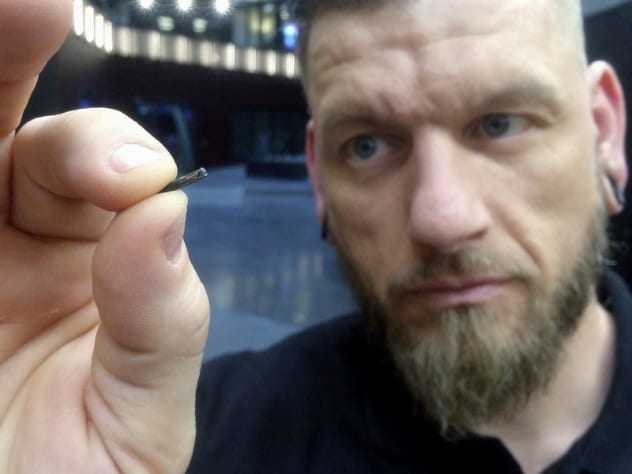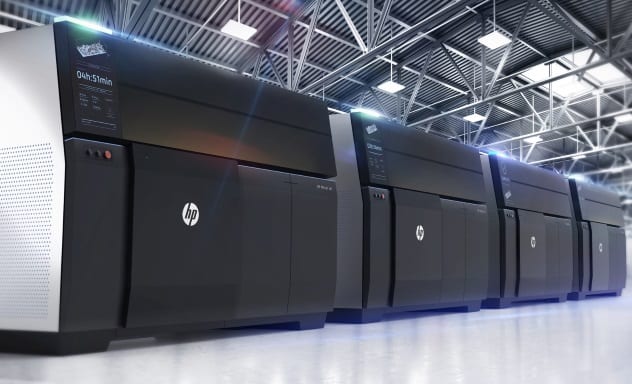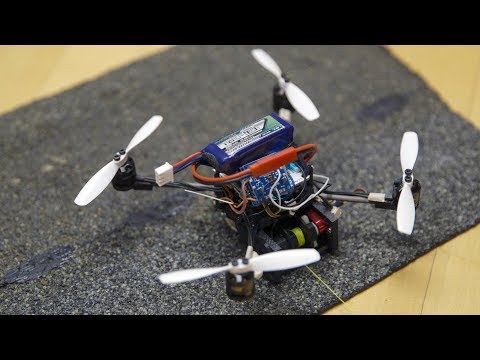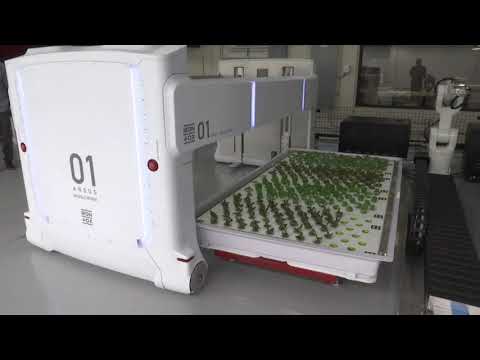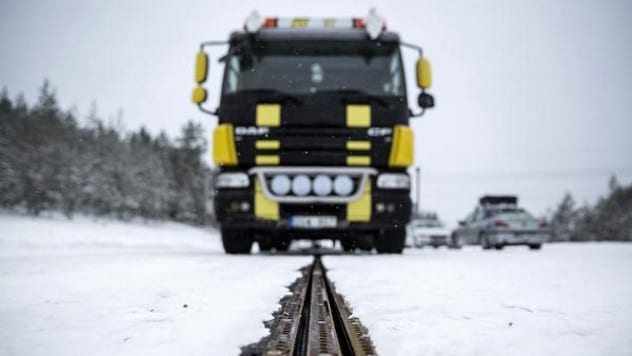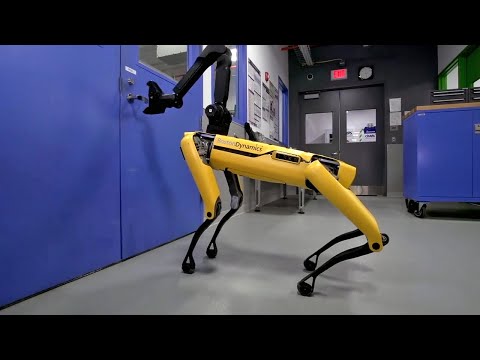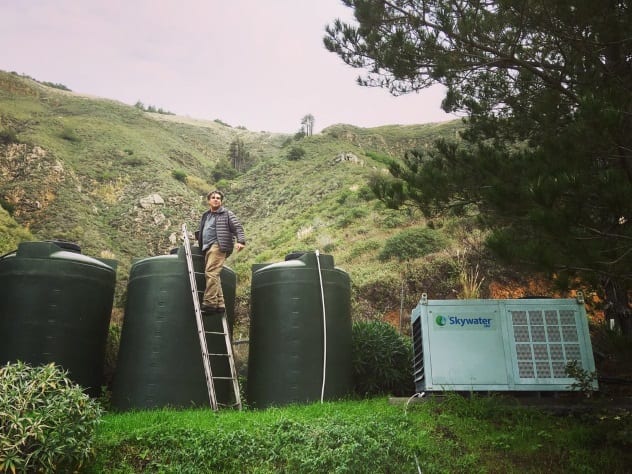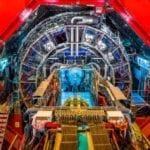Researchers have recently made some groundbreaking advancements, from a tiny microchip designed for better biometric security to a machine that can make gallons of fresh water straight out of the air. These innovations are impressive and offer us a glimpse at how we can improve our lives and create a more sustainable Earth. Here are ten of the most astonishing feats of modern technology in recent times.
10 Multipurpose Implants
The people of Sweden have been lining up to get rice grain-sized microchips implanted into their hands. Biohax International is the company behind the chips and is one of the most prominent providers of the technology in Sweden. These microchips improve their users’ daily lives when it comes to accessing their homes, offices, and gyms, all with the simple swipe of a hand. The microchips are also designed to contain emergency contact details, social media profile information, and even e-tickets for events and train trips. The microchips are inserted right above a user’s thumb using a syringe much like that which is used for vaccinations. The procedure is said to cost about $180, and over 4,000 Swedes have already adopted the technology. Even Sweden’s largest train company has jumped aboard the new chipping trend by allowing its commuters to use their chips instead of tickets, and there’s even talk that this technology could soon be used to make payments in stores and restaurants.[1]
9 3-D Metal Printing
3-D printing is a relatively new method of manufacturing which uses various kinds of plastic to make things. Now, companies like HP and GE have taken the first steps toward a making a new kind of additive manufacturing go mainstream by introducing 3-D metal printing products. HP’s 3-D Printing Business has recently introduced the HP Metal Jet, which is specifically made for the high-volume manufacturing of production-grade metal parts, quickly and at reduced cost. Manufacturers such as Parmatech have already deployed the HP Metal Jet for factory production. Some major customers placing orders include Volkswagen and Wilo as well as vertical-market manufacturers like Primo Medical Group and OKAY Industries. GE Additive has also announced their own large metal printer called the Arcam EBM Spectra H, which is a high-heat 3-D printer meant to print with metals that are prone to cracking. Working at temperatures exceeding 1,000 degrees Celsius (1,832 °F), it can print with metals such as titanium aluminide and Alloy 718. It will also be able to support the printing of nickel super alloys starting in 2019. These two printers are set to define a new generation of additive manufacturing and offer a glimpse of the possibilities that lie ahead in the future.[2]
8 Synthetic Embryos
Dutch scientists have made a revolutionary breakthrough in embryonic science by creating synthetic mouse embryos without the need for sperm or eggs. This achievement may lead to some promising implications for human infertility. Researchers from the MERLN Institute for Technology-Inspired Regenerative Medicine in the Netherlands used mouse cells that weren’t traditional sex cells to create “blastocyst-like structures.” By using two different types of mouse stem cells, the resulting mass of cells resembled that of a more traditional baby-forming process. When these structures were placed in the wombs of female mice, they grew for several days, which is a medical first. This kind of biomedical technology can assist in infertility research when it comes to miscarriages that occur at the implantation stage of development. The lead researcher, Dr. Nicolas Rivron, said that his team will now be able to generate large numbers of these embryos to study them in detail. This could help them understand why some embryos fail to implant and possibly screen for drugs that help with fertility. On the other hand, efforts could be stymied, since anything relatable to genetic engineering tends to cause a bioethical controversy.[3]
7 AI Painting Sells For $432,000
An AI program developed by Paris-based art collective Obvious has produced a painting that sold for $432,000 at an auction. Before the sale, Christie’s in New York estimated that the painting would fetch only around $7,000 to $10,000. The painting was called Portrait of Edmond Belamy, and it was produced using an algorithm as well as a data set of 15,000 portraits painted from the 14th to 20th centuries. The algorithm generated the image by comparing its own work to those in the data set until it couldn’t tell the two works apart. The sale, which was organized by Christie’s specialist Richard Lloyd, attracted a significant amount of media attention. According to Lloyd, AI is one of several technologies that will have a big impact on the art market in the future, although it may be far too early to predict what that impact will be.[4]
6 Drones That Can Lift 40 Times Their Own Weight
Researchers at the Ecole Polytechnique Federale de Lausanne (EPFL) in Switzerland and Stanford University were able to develop a new line of small flying robots that can move objects 40 times their own weight. These drones are called FlyCroTugs (which stands for “flying, micro tugging robots”) and are equipped with a system of winches, adhesives, and microspines that allow them to latch onto just about anything. Even though the drones have some unchangable parts such as the winch, they are highly customizable to suit any situation. For instance, the grippers can be moved around depending on the landing surface, and additional accessories such as wheels can also be attached when a task calls for it. Once the drones need to lift something, the grippers are deployed to connect with the object. These are a non-sticky adhesive designed by researchers who took some inspiration from the toes of geckos. The drone grippers create intermolecular forces between their pads and the surface of an object. If that isn’t enough, the microspines (which are a series of metal spikes resembling the point of a fishing hook) can be used. These drones can be used during sensitive situations such as rescue operations. Researchers were able to open a door by lassoing its handle, turning it, and pulling it until the door opened. In another test run, researchers attached a camera to the drone and used it to explore a crumbling structure.[5]
5 The Robot Farm
In San Carlos, California, a start-up company called Iron Ox created a fully autonomous farm. It’s a hydroponic indoor farm that relies on two machines to plant, care for, and harvest the produce. The first machine is a robot about as big as a car and weighs around 450 kilograms (1,000 lb). Its responsibilities include picking up the trays of plants and transporting them around the greenhouse. The second machine is a robotic arm that is responsible for the more refined manipulation tasks such as seeding and transplanting. Once a tray of plants has grown enough, the mobile robot carries it to the processing area. Once there, the robotic arm moves the baby plants from the densely packed tray to containers with more space. The co-founder and CEO of Iron Ox, Brandon Alexander, claims that the company is able to do the equivalent 30 acres of outdoor farming in just a single acre on its robotic farm. The company wants to expand by building more of these robotic farms near urban centers to make produce that is fresher upon arrival. Currently, Iron Ox is growing leafy greens and herbs, but they plan to start producing other crops such as tomatoes in the future.[6]
4 Road That Charges Electric Vehicles
Sweden plans to have fossil fuel-free transportation in place by the year 2030, and the Swedish government has just implemented what could be a critical step toward making it a reality. A part of a road near Stockholm has been equipped to charge electric vehicles as they drive on it. The project, called eRoadArlanda, uses technology similar to overhead cables that charge electric trolleys and buses. Yet, the cables are built into the road. Once a retrofitted vehicle senses it’s on the electric road, an arm lowers onto the road and charges the car’s battery. The track works regardless of any kind of weather condition. Although the system is designed to feed heavy truck loads, it will also be capable of charging cars and buses. The road will be paid for by billing the driver of each vehicle for the amount of electricity they’ve used while on the road. eRoadArlanda has completed 2.01 kilometers (1.25 mi) of the electrified road on a public highway as part of the test and plans to expand this technology to other parts of the country.[7]
3 Boston Dynamics’s First Commercial Robot
Boston Dynamics is well-known for its agile robots. Now, the company is set to release its very first commercial product to the market—a doglike robot called the SpotMini. The commercial release was announced in May 2018, and plans are in place to start shipping out SpotMini robots in July 2019 at the rate of 1,000 units per year. The ultimate goal is to provide a flexible platform for a variety of applications, such as construction, delivery, security, and home assistance. The Mini’s closest “relative” robot, Spot, stands at 1.2 meters (4 ft) high and weighs about 73 kilograms (160 lb). Videos were uploaded to YouTube displaying its incredible capabilities, from navigating harsh terrain to staying on its feet when kicked. The SpotMini has a sleek design, stands at about 0.9 meters (3 ft) high, and weighs 25 kilograms (55 lb). It can go wherever larger robots can’t, and with an optional snake-like arm, it can do things like open doors. Third parties will be able to design add-on tools thanks to a universal expansion port. Soon, it’ll become a regular occurrence to see a robot help people with daily tasks.[8]
2 App That Helps Accelerate Cancer Research
The DreamLab app is an application that runs in the background of an idling phone which utilizes the wasted processing power to perform complex scientific calculations for research purposes. The Vodafone Foundation has recently announced that the users of the DreamLab app have helped cancer researchers to finish Project Genetic Profile, a project focused on calculating the genetic similarities between brain, lung, melanoma, and sarcoma cancers. The app will now be used to help with Project Demystify, which will ultimately help connect the dots between human physical traits and their genetic basis. The Chief of Informatics at the Garvan Institute, Dr. Warren Kaplan, said that the DreamLab app showed the power of “citizen science,” the collective effort of members of the community to make an impact on research progress. Cancer is a disease of the DNA, and to understand it better, researchers have to analyze data from sequencing, or “decoding,” the DNA of cancer patients. This is where DreamLab steps in to help, with its users who have collectively contributed a whopping 20 million research calculations. New Zealanders have contributed over 220,000 “dreaming sessions,” which have helped to calculate the data three times faster than it would have originally taken.[9]
1 The Machine That Can Make Water Out Of Thin Air
A California-based team managed to create machines that can produce hundreds of gallons of fresh drinking water a day straight out of the air, which earned them a handsome $1.5 million prize. The machines are dubbed “Skywater” and were created by the Skysource/Skywater Alliance, a team of sustainability experts from Venice, California. The machines, which are housed in giant metal boxes, are atmospheric water generators that condense water vapor from the air and turn it into drinking water. These machines can be powered by solar energy or the burning of biofuels. They’re perfect for households, farming, or even emergency relief efforts. The Skysource/Skywater Alliance team received the prestigious Water Abundance XPRIZE from XPRIZE, a nonprofit organization from California that sometimes runs multimillion-dollar competitions geared toward creating solutions for the world’s problems. It was a two-year contest that sought to find answers to the global water crises by facilitating the development of new technologies.[10] David Hertz, one of the leaders of the Skysource/Skywater Alliance, said that he’s excited to see what their machines can do for people living in parts of the world where water is becoming scarce. According to him, there’s more than enough water vapor in the air for the machines to extract. In fact, he says that there’s about “37.5 million billion gallons of water” in the atmosphere at any given time, which is more fresh water than all of the rivers on Earth. You can follow me on Twitter @JustThatChickXD.
